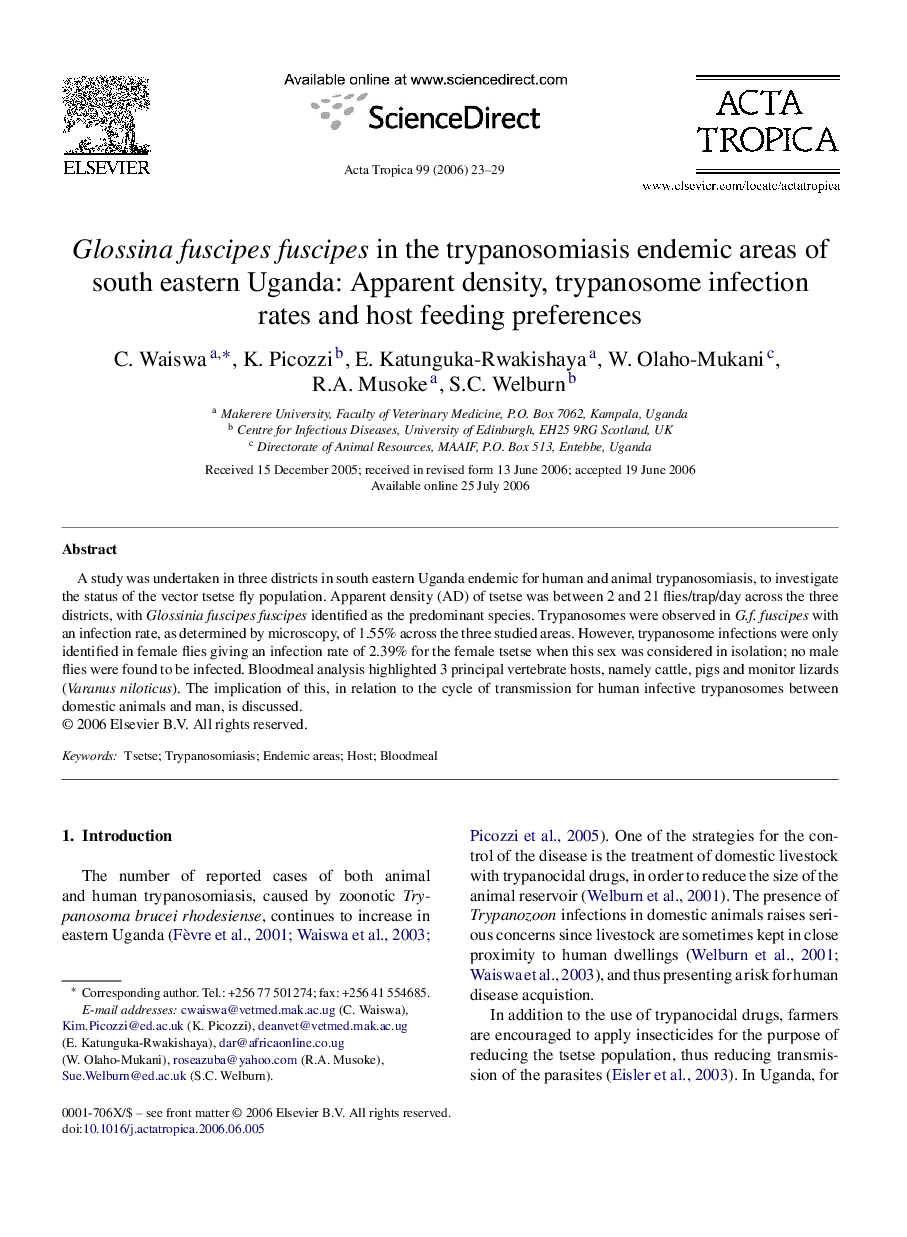| Article ID | Journal | Published Year | Pages | File Type |
|---|---|---|---|---|
| 3394831 | Acta Tropica | 2006 | 7 Pages |
A study was undertaken in three districts in south eastern Uganda endemic for human and animal trypanosomiasis, to investigate the status of the vector tsetse fly population. Apparent density (AD) of tsetse was between 2 and 21 flies/trap/day across the three districts, with Glossinia fuscipes fuscipes identified as the predominant species. Trypanosomes were observed in G.f. fuscipes with an infection rate, as determined by microscopy, of 1.55% across the three studied areas. However, trypanosome infections were only identified in female flies giving an infection rate of 2.39% for the female tsetse when this sex was considered in isolation; no male flies were found to be infected. Bloodmeal analysis highlighted 3 principal vertebrate hosts, namely cattle, pigs and monitor lizards (Varanus niloticus). The implication of this, in relation to the cycle of transmission for human infective trypanosomes between domestic animals and man, is discussed.
